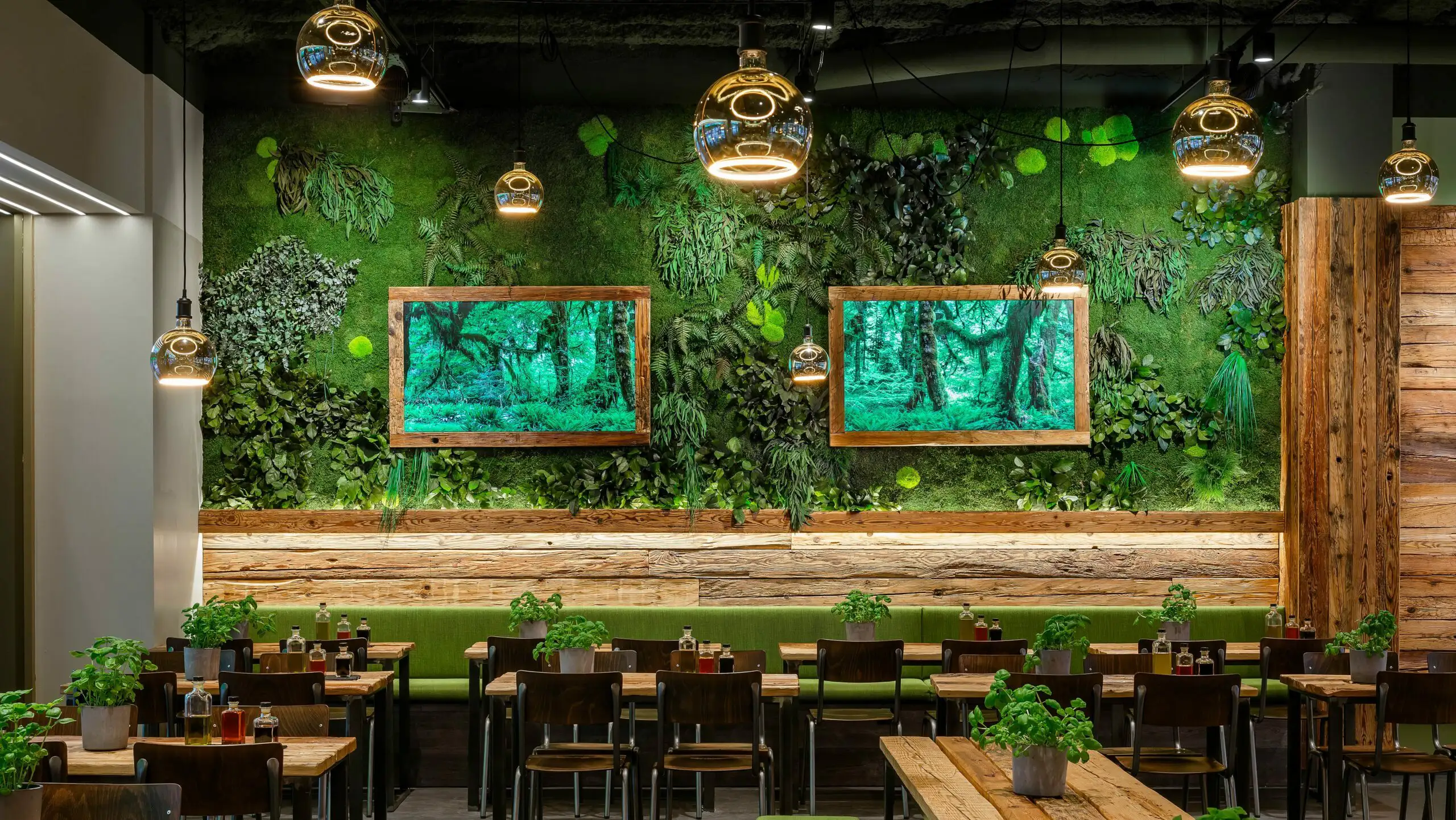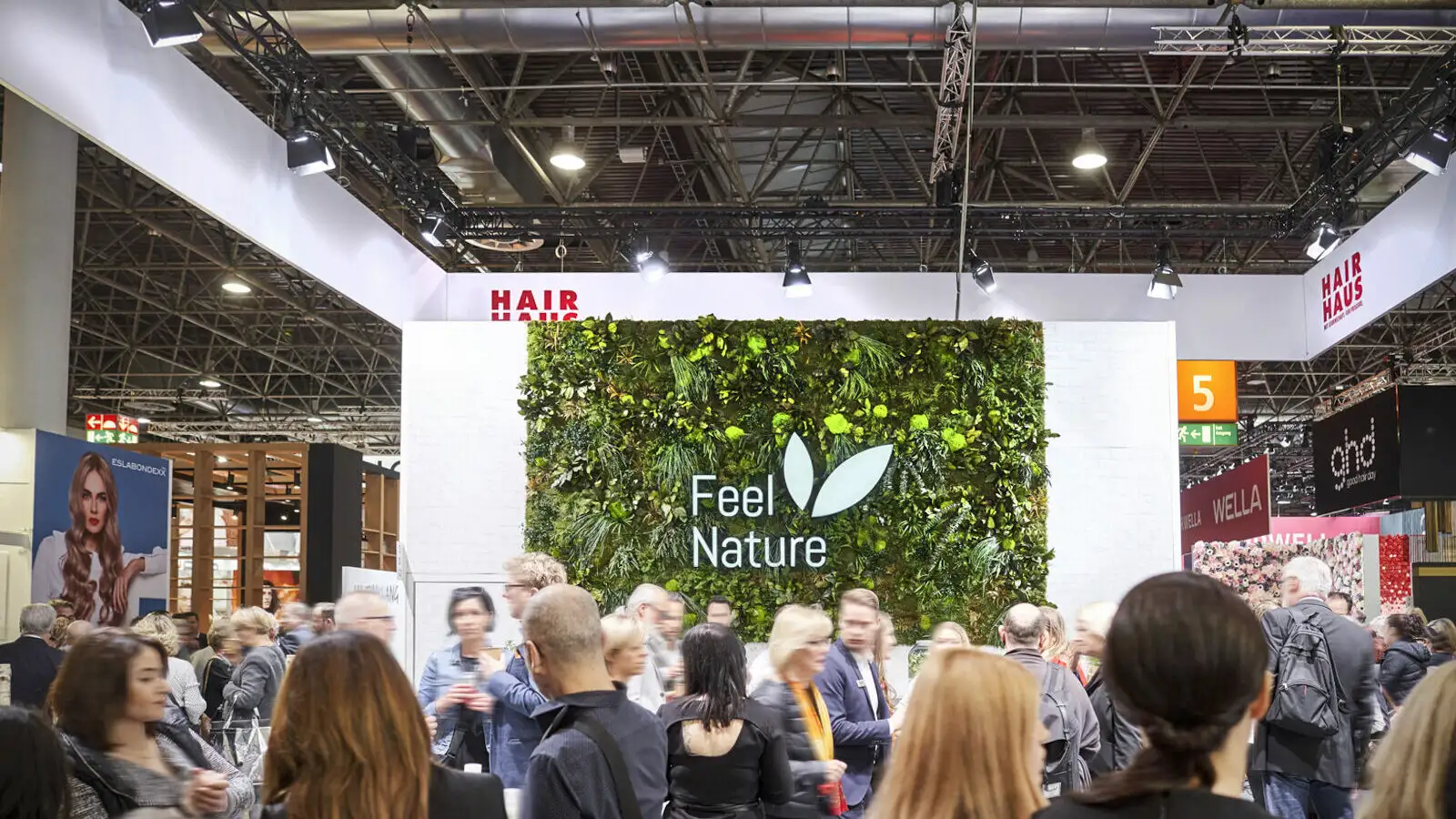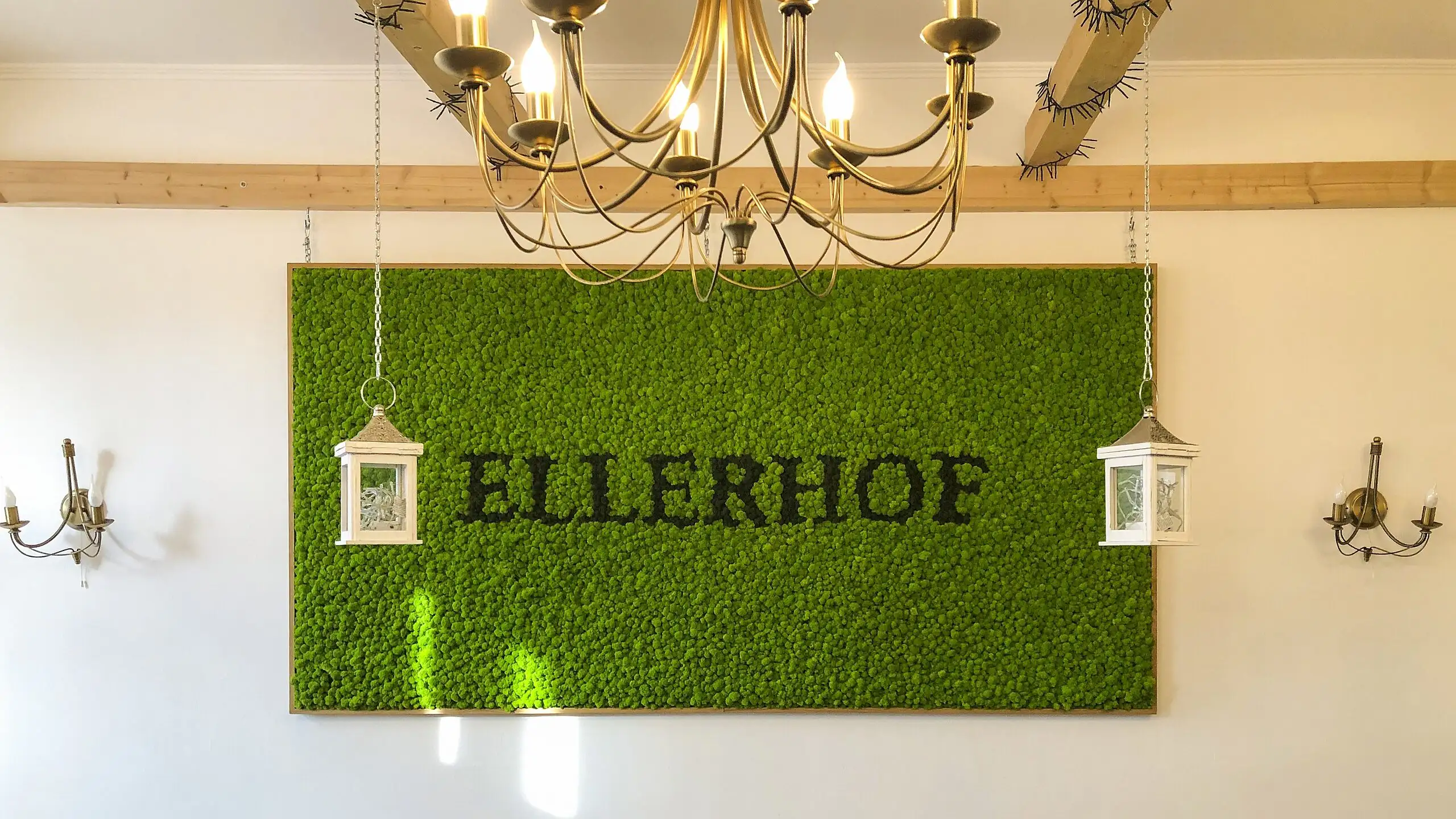Natürliche Wandverkleidungen
Herausforderung Innenraumgestaltung
Wände prägen wesentlich den Charakter von Räumen und Gebäuden. Immer häufiger werden für eine natürliche Raumgestaltung Biomaterialien und nachhaltige Wandverkleidungen verbaut. Dabei sollen die verwendeten Materialien nicht einfach nur dekorativ sein. Die Anforderungen an Innenräume haben sich mit den Jahren grundlegend verändert. Gerade in Büroräumen oder Praxen stehen Innenarchitekten:innen und Raumgestalter:innen vor neuen, großen Herausforderungen den Ansprüchen der Nutzer gerecht zu werden. Sie setzen vermehrt auf Rohstoffe und Materialien, die zusätzliche Mehrwerte liefern. Natürliche Wandverkleidungen eignen sich dafür wunderbar.
Besondere Eigenschaften zeichnen Naturmaterialien aus
Die Verwendung natürlicher Produkte wie Filz, Holz, Kork oder Moos für die Wandverkleidung verbessert je nach Anwendung z.B. die Akustik und das Raumklima. Die Materialien sind pflegeleicht, schadstoffarm und extrem vielseitig verwendbar. Es lassen sich komplette Raumkonzepte mit natürlichen Rohstoffen umsetzen. Gleichzeitig leisten Sie einen Beitrag für die Umwelt – viele Materialien werden mittlerweile äußerst nachhaltig und ressourcenschonend produziert und verbaut.
Wir stellen 5 der schönsten Materialien vor und erläutern welche Vor- und Nachteile es gibt
Holz
Der Klassiker unter den Wandverkleidungen hat eine lange Tradition. Rohe Holzwände prägten im Laufe der Menschheitsgeschichte lange Zeit die Innenräume. Und wer erinnert sich nicht an hohe, leicht muffig riechende Räume, die durch dunkle Holzvertäflung schwer, düster und gespenstisch wirkten. Omas Holzpaneele aus den 70ern haben heute längst ausgedient – Holz wird wieder vielseitig wie nie eingesetzt.
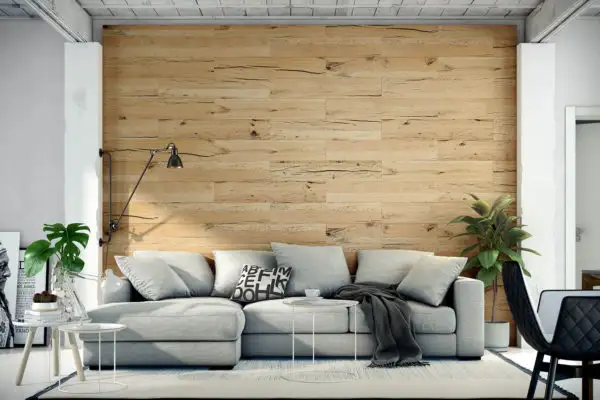
Eichenwand mit Sofa
Vorteile:
- warme, natürliche Optik
- einzigartige Struktur und Haptik
- leicht verarbeitbar
- schafft angenehmes Raumklima
Nachteile:
- Holz „arbeitet“ und verändert sich, Geräusche sind normal
- pflegeaufwändiger
- darf nicht permanent Feuchtigkeit ausgesetzt werden
- nicht feuerfest
Stein
Wandverkleidungen aus Stein werden ebenfalls schon sehr lange verwendet, bzw. waren seit jeher ein Bestandteil der menschlichen Bauweise. Dabei sollte man keinesfalls nur an die einfachen Feldsteinbehausungen denken. Edle Materialien wie Granit und Mamor kamen früh in der Architektur zum Einsatz. Heute geht der Trend vor Allem wieder zurück zu natürlichen Steinwänden, Ziegel im industrial design oder Schieferplatten für eine urbane Optik.
Vorteile:
- bruch- und wasserfest -> für Duschen, Bäder und andere Feuchträume perfekt geeignet
- feuerfest und nicht brennbar
- gute Wärmespeicherfähigkeit
- Dreidimensionalität verleiht dem Raum Tiefe
Nachteile:
- Prüfung und Vorbereitung des Untergrundes erfordert Fachwissen
- relativ teuer
- aufgrund des hohen Eigengewichtes nicht für alle Wandkonstruktionen geeignet
- schwierige Realisierung von Farbkombinationen
Kork
70 Prozent der weltweiten Korkernte wird später zur Herstellung von Verschlüssen für Wein- und Sektflaschen verwendet. Den „Korken“ kennt jeder. Sohlen für Hausschuhe werden ebenfalls häufig aus Kork hergestellt. In der Baustoffindustrie ist das Material dagegen eher ein Nischenprodukt – auch deshalb, weil der begrenzt verfügbare Rohstoff vergleichsweise teuer ist. Im Wohnbereich ist Kork vor allem als Material für Bodenbeläge bekannt. Dennoch können einzigartige Wandgestaltungen realisiert werden, da sich Kork hauchdünn als Tapete verwenden lässt.
Vorteile:
- Extrem leicht
- Sehr dünn – sogar als Tapete verarbeitbar
- Robust und äußerst belastbar
- Viele Designvariationen möglich
Nachteile:
- recht kostenintensiv
- nicht feuerfest
- nur bedingt für feuchte Räume geeignet
- kann bei zu hoher UV- Strahlung ausbleichen
- Verarbeitung benötigt Fachwissen
- wächst sehr langsam nach
Moos
Moos ist eine faszinierende Alternative zu Hydrokulturen im Bereich der Raumbegrünung. Richtig aufbereitet und präpariert benötigt es weder Licht, Bewässerung noch Düngung. Außerdem entstehen keine weiteren Kosten durch Pflege dieser immergrünen Wandgestaltung. Eine natürliche Wandverkleidung aus Moos und Pflanzen trägt zu einem extrem ruhigen Raumklima bei. Es fühlt sich an, als würdest du an einem sonnigen Tag im Wald sitzen. Beeindruckende Mooswände in jeder Größe sind Garant für Aufmerksamkeit und erschaffen einen hohen Wiedererkennungswert. Wandverkleidungen aus Moos erhöhen den Wohlfühlfaktor im Raum und senken nachgewiesenermaßen den Stresspegel. Hier stellen wir Dir unsere Moose im Detail vor.
Vorteile
- Absorbiert Schall um bis zu 60%
- Lebendige natürliche Optik mit vielen Gestaltungsmöglichkeiten
- nahezu pflegefrei
- verbessert das Raumklima
- für Allergiker geeignet
Nachteile
- Keine Wand gleicht der anderen – Reproduzierbarkeit nahezu unmöglich
- Herstellungsprozess ist aufwendiger
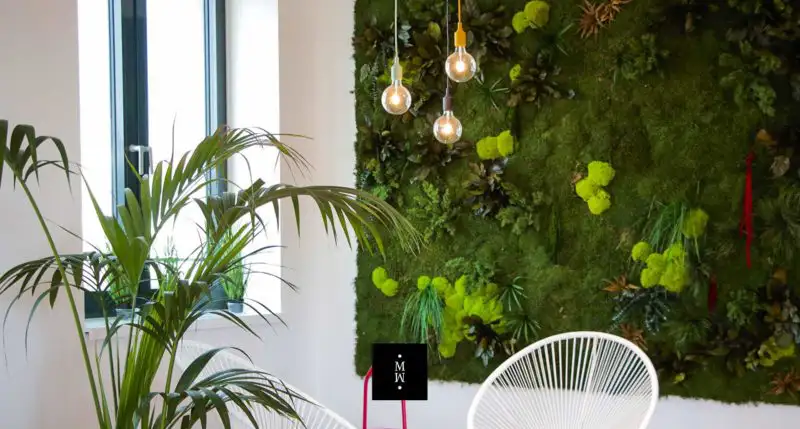
Dschungelmooswand
Wie du siehst bietet die Natur eine Vielzahl von wunderschönen Möglichkeiten und Materialien Innenräume umweltfreundlich und nachhaltig zu gestalten. Unser erklärtes Ziel bei Moos Moss ist es, deine Lebens- und Arbeitsräume mit unseren Mooswänden auf ein völlig neues Level zu heben, sodass du entspannt, fokussiert und kreativ sein kannst. Wir bringen dir die schönsten Gefühle, die du sonst nur im Wald spürst direkt an Wand und Decke.
Let´s make the world a little bit more green


